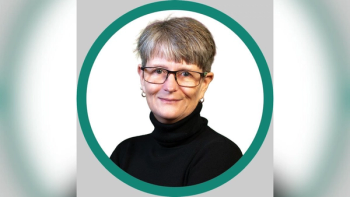
Highlights from the NewYorkBIO Conference: FDA Commissioner Hamburg Speaks
Investments, acquisitions in biotechnology, valuation, and regulatory innovation were main themes at the 2014 NewYorkBIO Conference.
Investments, acquisitions in biotechnology, valuation, and regulatory innovation were main themes at the 2014 NewYorkBIO Conference. The conference bridged the gap between scientists in academia and start up biopharmaceutical companies with investment bankers and commercialization experts. The event also drew in high level personnel, such as FDA Commissioner Dr. Margaret Hamburg, and Kadmon's Sam Waksal.
A State of the IPO and Acquisition Environment in Biotech
As the macroeconomic environment improves with low interest capital still available, there is a flurry of M&A and IPOs in the biopharmaceutical sector. 2013 and 2014 are years that have marked significant recovery in biotech IPOs. “In 2012 there were 11 biotech IPOs, 2013, 40 and, 2014, 33 thus far,” said Annette Grimaldi, Managing Director at PMO Capital Markets.
“The macro market backdrop is good and improving, and IPO financing do best when the macro picture is strongest,” added Grimaldi. Additionally, biotech companies with good quality Phase II research are also surfacing to seek Angel funding and venture capital, as 1/3rd of Angel investments are unreported, since they tend to be financed by private funds and alternative sources, according to financial experts.
There were challenging discussions between the current clinical trial and regulatory approval infrastructure with investor demands. For example, investment bankers spoke about defining milestones with start-up biotech companies for further capital investments, and that many investors want to see data and value created events within the first 12 to 18 months of the investment. Nevertheless, clinical trials are dynamic, lengthy and costly with high failure rates. As a result, investors are veering away from early phase biotech companies and more towards early-stage platform technologies. To fill this gap, large biopharmaceutical enterprises are employing internal venture capital departments to seek out and invest in early discoveries that are compatible with their pipelines.
Reimbursement Valuation: A New Challenge
The rise of generics and increasing medical product market saturation are driving payers to become more stringent on innovative drug reimbursement, which is adding more stress to medical product commercialization. “We live in a world where we talk about reimbursement. Reimbursement still plays a game with our industry. Very soon, unless we can give real metrics to payers, and make patients, payers and physicians feel what we are doing is really worth something, we’re not going to get reimbursed for it,” stated Sam Waksal, Founder and CEO of Kadmon.
There is a lot of debate on study endpoint value, as regulators and payers/advocacy groups demand different endpoint metrics for approval and reimbursement. To demonstrate, patient advocacy groups are starting to play a role in reimbursement evaluation; specifically, payers are no longer observing Overall Survival as a significant endpoint, instead, they demand Progression Free Survival metrics in rare disease indications.
Many experts are suggesting that biopharmaceutical enterprises should incorporate payers and advocacy groups in clinical trial protocol design, and that study teams balance regulatory approval endpoint requirements with market access endpoints.
The Need for Regulatory Innovation
The message from the
Newsletter
Stay current in clinical research with Applied Clinical Trials, providing expert insights, regulatory updates, and practical strategies for successful clinical trial design and execution.






.png)



.png)



.png)
.png)
